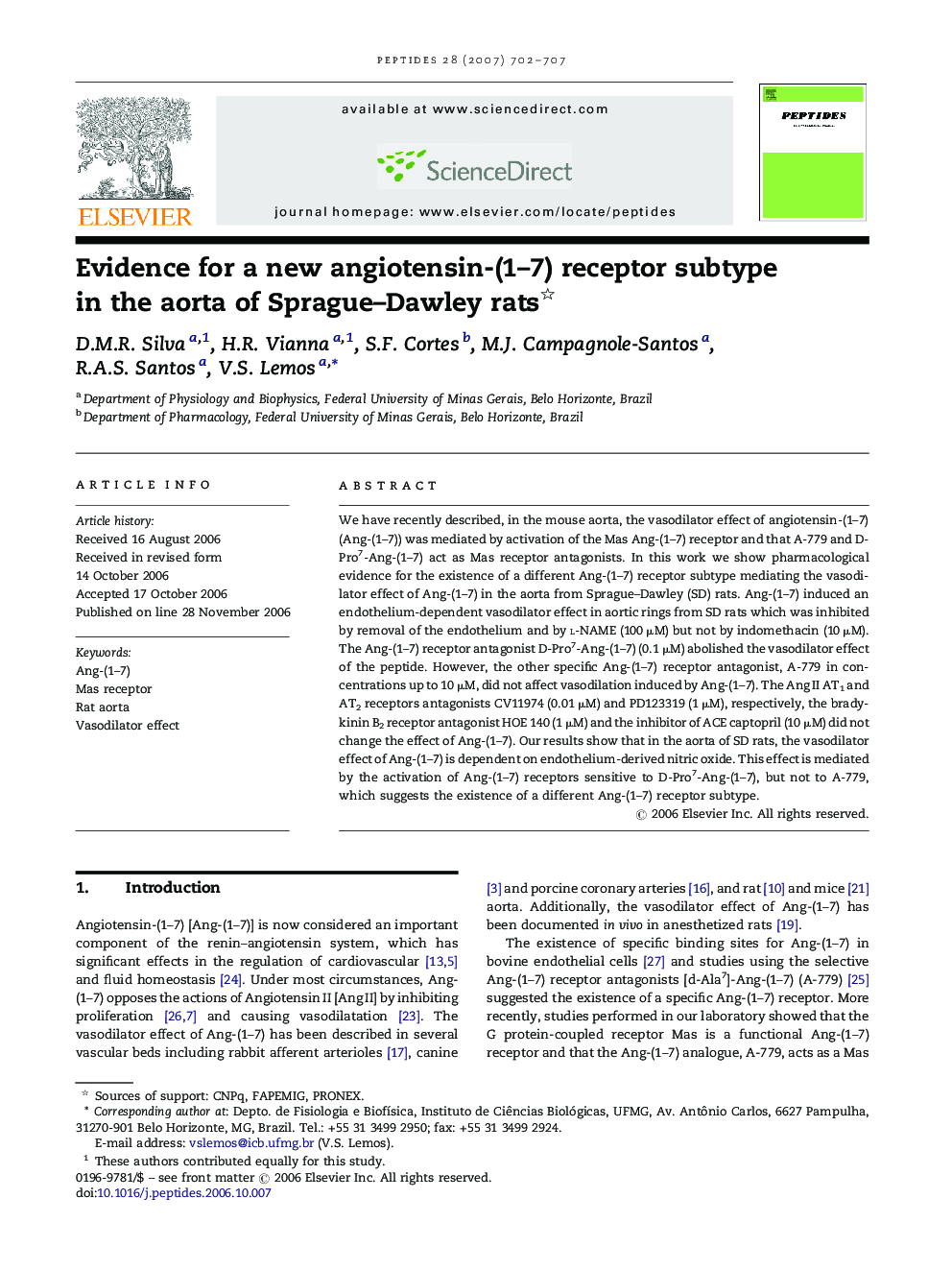| Article ID | Journal | Published Year | Pages | File Type |
|---|---|---|---|---|
| 2008159 | Peptides | 2007 | 6 Pages |
We have recently described, in the mouse aorta, the vasodilator effect of angiotensin-(1–7) (Ang-(1–7)) was mediated by activation of the Mas Ang-(1–7) receptor and that A-779 and D-Pro7-Ang-(1–7) act as Mas receptor antagonists. In this work we show pharmacological evidence for the existence of a different Ang-(1–7) receptor subtype mediating the vasodilator effect of Ang-(1–7) in the aorta from Sprague–Dawley (SD) rats. Ang-(1–7) induced an endothelium-dependent vasodilator effect in aortic rings from SD rats which was inhibited by removal of the endothelium and by l-NAME (100 μM) but not by indomethacin (10 μM). The Ang-(1–7) receptor antagonist D-Pro7-Ang-(1–7) (0.1 μM) abolished the vasodilator effect of the peptide. However, the other specific Ang-(1–7) receptor antagonist, A-779 in concentrations up to 10 μM, did not affect vasodilation induced by Ang-(1–7). The Ang II AT1 and AT2 receptors antagonists CV11974 (0.01 μM) and PD123319 (1 μM), respectively, the bradykinin B2 receptor antagonist HOE 140 (1 μM) and the inhibitor of ACE captopril (10 μM) did not change the effect of Ang-(1–7). Our results show that in the aorta of SD rats, the vasodilator effect of Ang-(1–7) is dependent on endothelium-derived nitric oxide. This effect is mediated by the activation of Ang-(1–7) receptors sensitive to D-Pro7-Ang-(1–7), but not to A-779, which suggests the existence of a different Ang-(1–7) receptor subtype.
